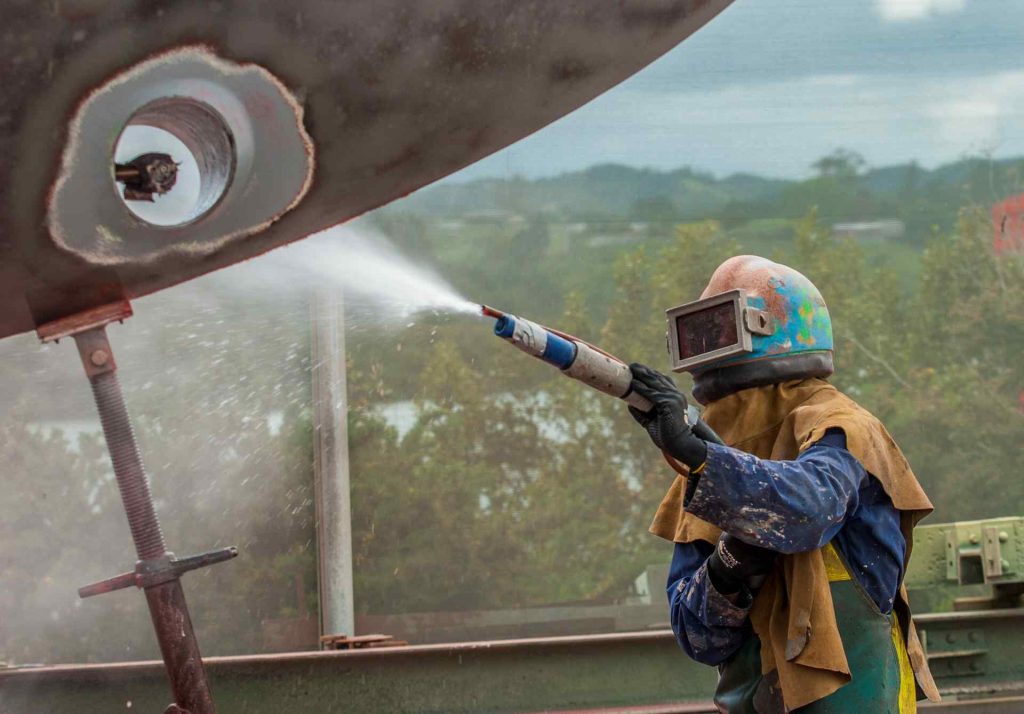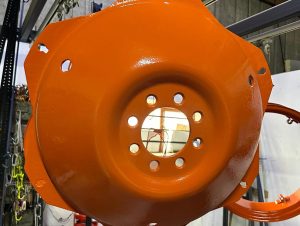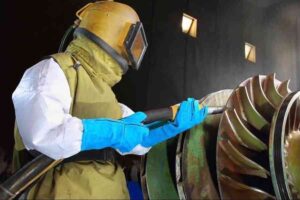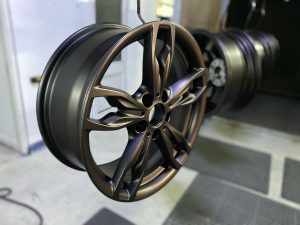Sandblasting requires specific equipment to propel abrasive materials against surfaces at high velocities.
Here is a breakdown of the essential sandblasting equipment that’s required to complete the task effectively:
Equipment for sandblasting AKA shot blasting
- Sandblaster gun or nozzle
A sandblaster gun or nozzle is a handheld device responsible for directing the abrasive material towards the surface that is being treated. It regulates the velocity and the flow of the abrasive particles. It is an essential component of a shot blasting kit.
- Air compressor
An air compressor is a critical part of sandblasting machinery. It powers the sandblaster by generating compressed air that propels the abrasive materials through the nozzle. The capacity and size of the air compressor are crucial factors that determine the effectiveness of the sandblasting process.
- Abrasive material
A variety of abrasive materials can be used depending on the application and the surface that is being treated. Some of the common abrasive materials include sand, garnet, aluminium oxide, crushed glass, and baking soda. The choice of abrasive will depend on factors such as particle size, hardness, and the desired finish of the surface. Abrasive materials are a key aspect of sandblasting equipment.
- Blasting Cabinet or Enclosure
A blasting cabinet or enclosure provides a controlled environment where the operator can work safely for enclosed or contained sandblasting operations. It also prevents abrasive particles from dispersing into the surrounding area.
- Protective Equipment
Personal protective equipment (PPE) is essential for operators looking to prevent exposure to abrasive particles and flying debris. This will include safety goggles or a face shield, gloves, and other protective clothing to protect against abrasive impact.
- Dust collection systems
A vacuum or other dust collection system is often required to capture and contain the dust and debris particles that might be generated during the sandblasting process. It helps to maintain a safe and clean working environment.
What size air compressor do you need to run a sandblaster?
The size and capacity of the air compressor need to be carefully considered. Some of the factors to consider are:
- Cubic Feet per Metre (CFM)
Sandblasters require a certain volume of air at a specific pressure to operate effectively. This is measured in CFM, with the requirement varying depending on the size of the sandblaster nozzle, as well as the choice of abrasive materials. As a general rule of thumb, the air compressor size should have at least 1.5 to 2 times the CFM rating of the sandblaster. This means that if the sandblaster requires 20 CFM, the air compressor should ideally provide 30 to 40 CFM to ensure continuous operation without overworking the compressor.
- Pressure
Getting the pressure right is vital and this will be determined by the application and the abrasive material being used. Sandblasters typically operate at pressures ranging from 60 PSI to 120 PSI.
Opting for a professional sandblasting service will ensure that the right sandblasting equipment is chosen for the task.
Professional sandblasting from Pershore Dip Coating
Our sandblasting service in Worcester is a budget-friendly and highly effective means to achieve the desired results.
Our family-run team provides a personal and professional approach to all our clients across all our services. We pride ourselves on the quality of our work and can offer expert advice about the shot blasting process.
Contact us to find out more and to request a comprehensive quote.




